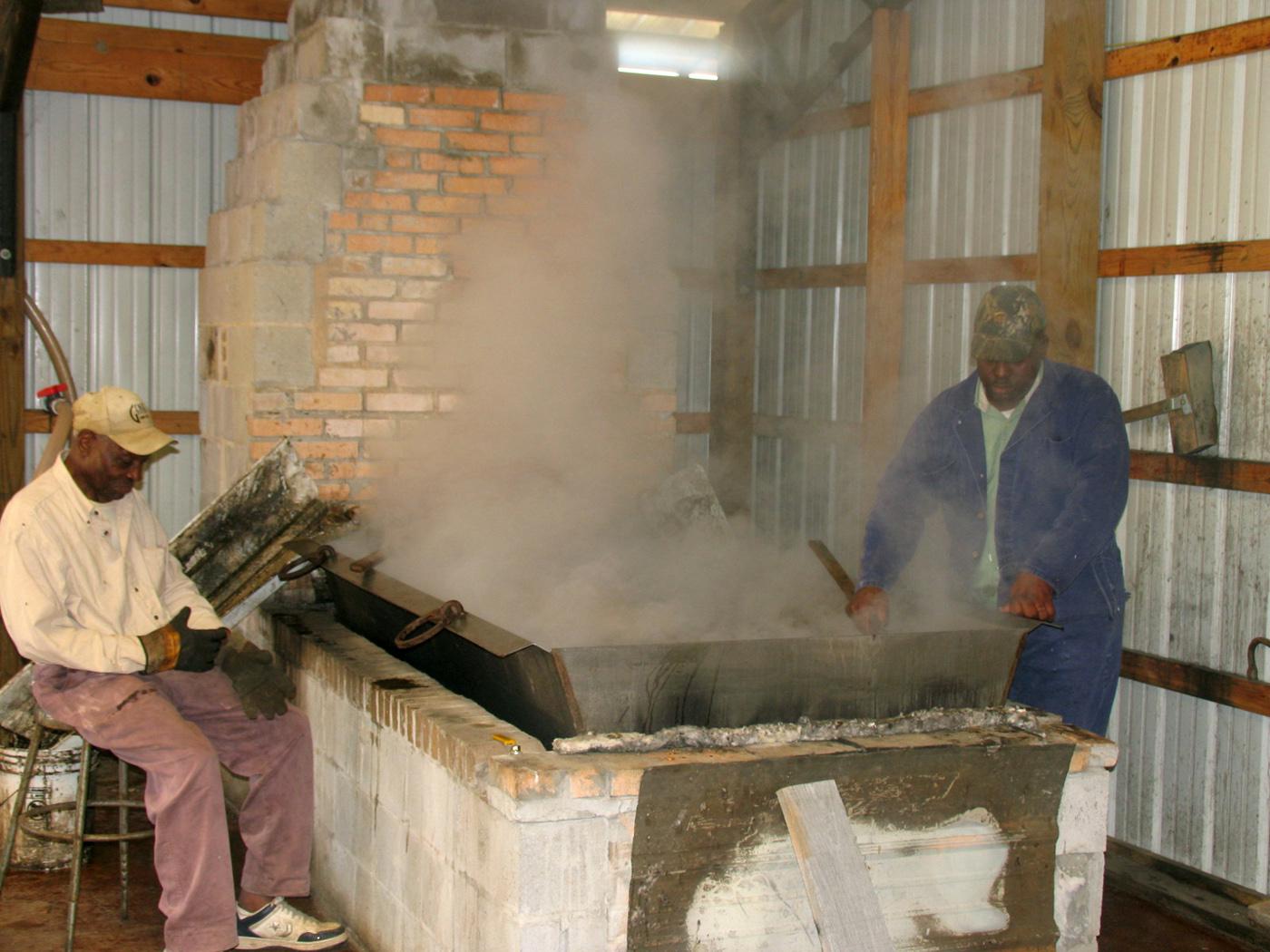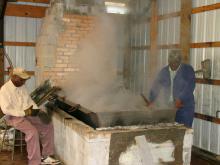Information Possibly Outdated
The information presented on this page was originally released on January 6, 2011. It may not be outdated, but please search our site for more current information. If you plan to quote or reference this information in a publication, please check with the Extension specialist or author before proceeding.
Old-fashioned molasses makes state's top syrup
MISSISSIPPI STATE – An old-time family tradition of turning sugar cane into molasses earned a Jefferson Davis County man honors as the state’s top syrup producer for 2010.
Hosea Brown owns and operates My Paw Paw’s Ole Fashion Molasses in New Hebron. He grows about 1.5 acres of sugar cane on his Bradley Hills Farm and processes the cane into syrup molasses each year.
“I do this as a hobby because my grandfather has done it for years,” Brown said. “I’m just trying to keep it going as a family heirloom, and I have somewhat taken on the family responsibility.”
Brown has driven a truck for UPS for more than 22 years. In 1999, he began taking a week off work to spend it with his grandfather making syrup.
“I had no idea this is where it was going,” Brown said. “It grew from one week to two weeks and now is up to four weeks.”
His grandfather turned the syrup-making business over to Brown in 2004. He died in November 2008 in the middle of the syrup-making season. Today, Brown’s father, two uncles and his grandfather’s friend help with production when they can.
“Syrup making is a seasonal thing,” Brown said. “We try to finish our sugar harvest the last week of October to the first week of November. Depending on how much I have to make, we begin to process the cane and make sugar around the second week of November.”
To make molasses out of sugar cane, the hand-harvested cane is first sent through a cane mill, which is like a press that squeezes the juice out of the stalks and into a holding tank. When it’s time to make syrup, the juice is pumped into the main tank and gravity fed into an open pan. A wood fire underneath the pan cooks the juice for about three hours until the proper amount of water has been cooked off.
“We generally cook about 80 gallons of juice at a time to yield pure, 100 percent sugar cane syrup,” Brown said. “The chewing kind of sugar cane yields about 9 to 10 gallons of syrup. The new variety produced at MSU yields about 12 to 15 gallons of syrup.”
In 2004, Brown built a 40-by-60 shop for molasses production and an exterior 20-by-25 shed over the mill that squeezes the sugar cane.
“We can process in rain or shine,” Brown said. “I built it like this so we would have plenty of room for the family to gather.”
He sells his syrup for $5 a pint and $9 a quart, mostly via word of mouth. This year, he cooked 98 gallons of syrup for his own business and another 270 gallons for other area producers.
For his efforts in 2010, Brown was named Mississippi’s top sugar cane processor/producer by the Mississippi Syrup Producers/Processors Association.
“People start asking me for my syrup before we even make it,” Brown said.
Thomas Brewer is the Mississippi State University Extension Service director for Jefferson Davis County. He estimated there are 20 acres of sugar cane in his county, grown by six producers. Small crops of a few acres or less are harvested by hand with a cane knife. Brewer said sugar cane is labor-intensive to produce and harvest.
“After harvest in the fall, you have to take the sugar cane seeds and bank them,” Brewer said. “That means you put the seeds in a pile and cover them with dirt to hold the seed stock over until it can be planted in the spring.
“Some producers plant in the fall or winter months, but they have to plant deeply in furrows. In the spring, they have to come back over the furrows and pull about 6 inches of dirt off the top so the shoots can start coming out of the ground,” he said.
Seed that is banked in the fall or planted deeply in furrows is protected by the ground from frost and freeze. Brewer said seed does not store well through the winter indoors, possibly because it gets too dry in storage. In the spring, banked sugar cane seed is dug up and planted.
For now, Brown sees his sugar cane farm and molasses production as mostly a seasonal hobby. He put a lot of money into the effort and makes some of it back, but he wants to expand the business when he retires.
“I’m just trying to take what my grandfather did and take it a little further,” Brown said. “Back in the old days, they made syrup for the community. My plans are to expand this. One reason I built the shop the way I did was to allow schools in the area to bring young people in on a field day.”




